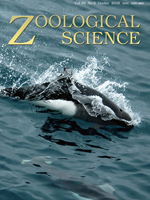Capitella teleta Blake et al., 2009 is an opportunistic capitellid originally described from Massachusetts (USA), but also reported from the Mediterranean, NW Atlantic, and North Pacific, including Japan. This putatively wide distribution had not been tested with DNA sequence data; intraspecific variation in morphological characters diagnostic for the species had not been assessed with specimens from non-type localities, and the species status of the Japanese population(s) was uncertain. We examined the morphology and mitochondrial COI (cytochrome c oxidase subunit I) gene sequences of Capitella specimens from two localities (Ainan and Gamo) in Japan. Specimens from Ainan and Gamo differed from C. teleta from Massachusetts in methyl-green staining pattern, shape of the genital spines, and shape of the capillary chaetae; we concluded that these characters vary intraspecifically. Species delimitation analyses of COI sequences suggested that worms from Ainan and Massachusetts represent C. teleta; these populations share a COI haplotype. The specimens from Gamo may represent a distinct species and comprise a sister group to C. teleta s. str.; we refer to the Gamo population as Capitella aff. teleta. The average Kimura 2-parameter (K2P) distance between C. teleta s. str. and C. aff. teleta was 3.7%. The COI data indicate that C. teleta actually occurs in both the NW Atlantic and NW Pacific. Given the short planktonic larval duration of C. teleta, this broad distribution may have resulted from anthropogenic dispersal.
How to translate text using browser tools
1 October 2016
Cosmopolitan or Cryptic Species? A Case Study of Capitella teleta (Annelida: Capitellidae)
Shinri Tomioka,
Tomohiko Kondoh,
Waka Sato-Okoshi,
Katsutoshi Ito,
Keiichi Kakui,
Hiroshi Kajihara
ACCESS THE FULL ARTICLE

Zoological Science
Vol. 33 • No. 5
October 2016
Vol. 33 • No. 5
October 2016




